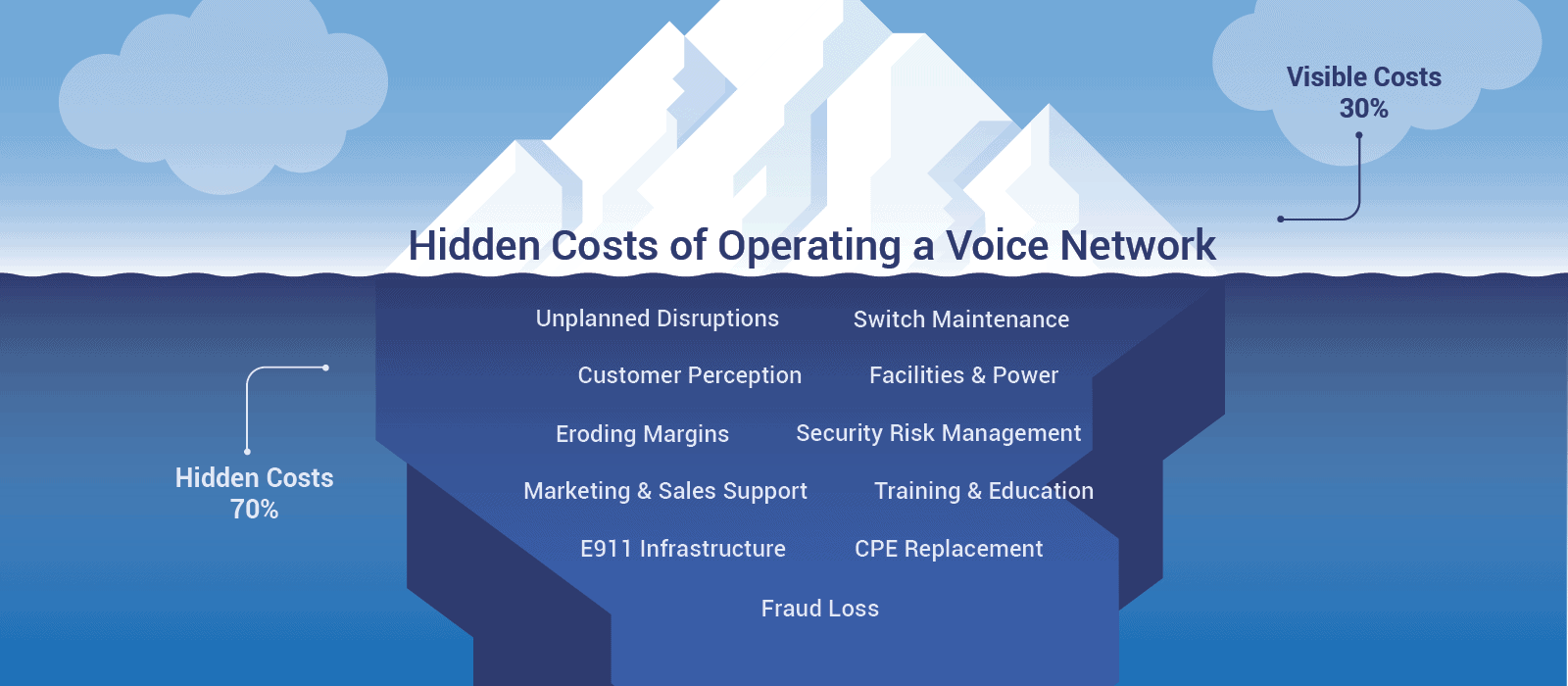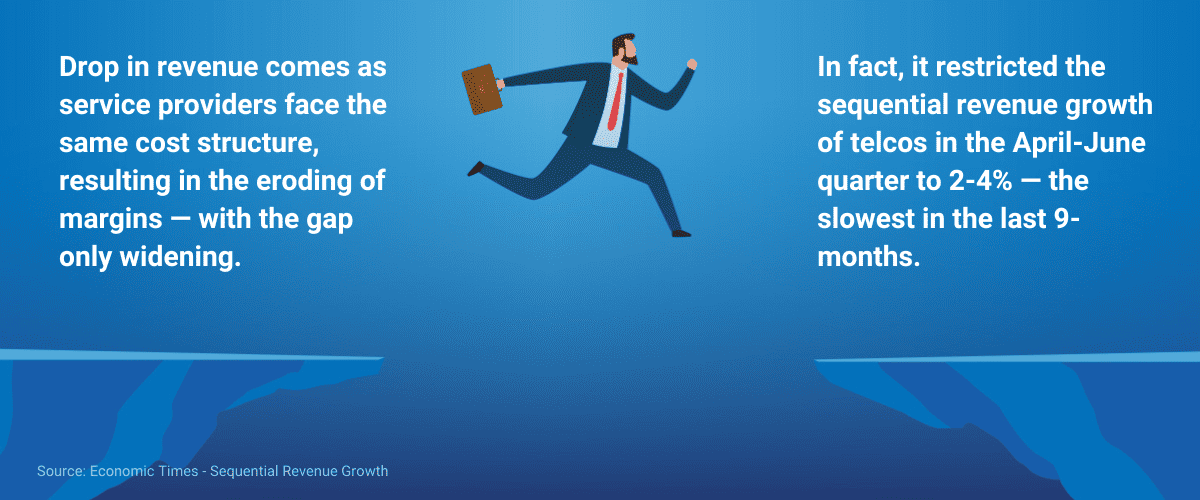
Balancing the ongoing maintenance of legacy technology with customers’ growing need for next-gen capabilities is a challenging but critical task for modern communication service providers (CSPs) — and these clashing objectives aren’t easy to reconcile.
The future of telecommunications is in the cloud. But determining the right time to implement a TDM and softswitch replacement, despite continued serviceability of existing equipment, is a big responsibility for CSPs and their shareholders. A thorough consideration of the anticipated and unanticipated consequences of a cloud migration takes time. Additionally, many CSPs remember the pain and frustration experienced during previous network upgrades and migrations — especially related to the high costs— and are hesitant to do it again. However, the telecom industry is changing, and it’s important to act sooner rather than later.
Truth is, CSPs that still insist on using legacy TDM and softswitches run the risk of missing the looming iceberg (metaphorical, of course) that can shatter their entire business model.
Which would be bad.
Legacy voice networks are outdated, prone to outages, and expensive to maintain. So why hasn’t everyone switched to the cloud yet? Well, some providers don’t realize how much they’re really paying to maintain the old system.
Let’s explore some of the most common hidden costs of operating a legacy voice network (including CAPEX, OPEX, and network expenses), and why moving to the cloud is the best long-term solution for your business.
Are You Building an Unsinkable Business?
1. CAPEX Costs for On-Premises Equipment
Overall, the telecommunications industry’s journey to the cloud is well underway, but many CSPs are still limping along with costly legacy infrastructure. This strategy, however, is inherently risky, because the cost of maintaining these networks will only increase as they become older, while over-the-top (OTT) providers will continue to grow capital to invest in new technologies at relentless rates.
Telecom providers know their existing platforms are verging on end-of-life (EOL). Networks built thirty or forty years ago not only have legacy TDM switches that are aging out, but even first-generation voice over internet protocol (VoIP) platforms are at or very near to end-of-life.
Providers can kick the can down the road by replacing hardware with hardware, but they will face the same challenges and capital expenditure when they have to replace it all again in another five to seven years. Taking into consideration the time value of money — a dollar today being worth more than a dollar tomorrow — service providers can avoid large CAPEX expenditures by moving to the cloud now, allowing them to invest hard-earned capital in more strategic projects, like growing their broadband network, rather than an aging switch infrastructure.
2. OPEX Costs: Aging Workforce & Replacement Parts Scarcity
Skilled personnel are retiring in greater numbers year over year, making it difficult for providers to find professionals with the skillset required to operate and manage legacy hardware. The OPEX to retain such employees or train new hires is significant. And even if training is offered, millennials aren’t usually excited to learn obsolete technologies that won’t serve their career growth.
Additionally, TDM and softswitches are, by their very nature, antiquated technologies that may be completely unsupported by the original manufacturer. In such an unfortunate scenario, CSPs are exposed to significant risk if they ever require a critical spare. Not to mention that scarcity of replacement parts and equipment drives up operational costs even further. For service providers that are at the mercy of an on-premises system with a fixed cost structure, rising costs result in the eroding of margins — and the gap is widening.
Moving to the cloud allows CSPs to reduce their reliance on legacy technologies, so they can apply their skilled labor to more strategic initiatives and still recruit the cream of the crop who want to grow their skills at more innovative companies.
3. Network Expenses: Management, Maintenance, & More
Businesses that depends on high-CAPEX operating platforms know the critical value of careful attention to persistent maintenance, and CSPs are no exception. Network infrastructure is key to efficiency and reliability as competitive variables. Providers with legacy systems must spend a disproportionately high proportion of their budget and resources on skilled personnel, like VoIP, switch, network, and voice engineers. This cost-burden is a by-product of legacy systems being unable to keep up with the rapid pace of change and escalation in demands, and it’s causing hikes in manual, labor-intensive processes to make up for system deficiencies.
In short, CSPs with legacy systems must continuously invest more (and hike prices) to maintain basic operational processes and cope with industry change than their better positioned cloud peers.
Conclusion — Act Now or Risk Sinking Your Ship
In the long run, sticking with a legacy system is far more expensive than switching to the cloud. Telecommunications is a cutthroat market, and the TDM and soft switching status-quo of maintaining legacy platforms is no longer a sustainable option. Cloud communications providers allow CSPs to eradicate many layers of infrastructure CAPEX, OPEX, and network expenses by going with a software-as-a-service (SaaS) subscription, much like modern streaming services. This type of business model is more flexible than on-premises systems and doesn’t come with any hidden costs, which makes it a good deal for everyone.
Furthermore, substantial hidden costs hinder CSPs from generating ROI that is vital to expand, compete with OTT players, and win customers.
As demands for a superior customer experience increase, it is imperative that CSPs running on legacy systems act now or they will risk losing market share to competitors who are better equipped to capture it. Replacing legacy systems with cloud technology is a vital step in achieving that goal.







